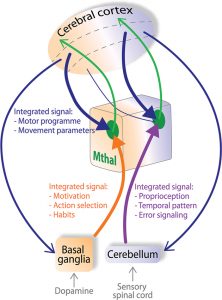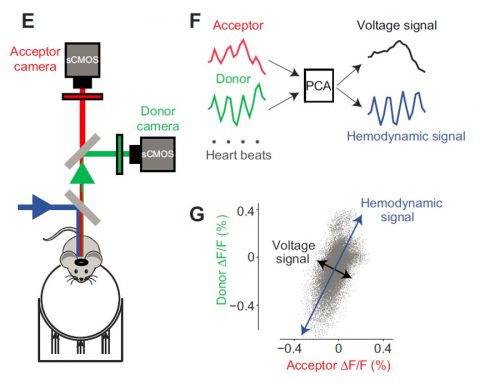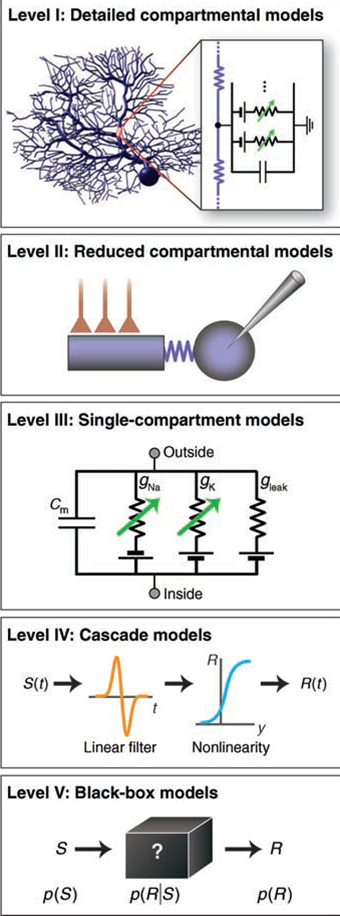Overview
The basal ganglia and the cerebellum are intimately connected with the cerebral cortex through the thalamus, such that together these brain area are involved in movement control and cognition.
Dysfunction of this network of brain structure results in motor disorders, such as ataxia when the cerebellum is impaired and Parkinson’s disease when the dopamine innervation of the basal ganglia degenerates.
Techniques we use
-
Mouse Behavior
-
Optogenetics
-
Cortical Voltage Imaging
-
Electrophysiology in vivo
-
Electrophysiology in vitro
-
Computer Modeling
-
Histology
Experimental Approach
1) The motor thalamus has a key position in transmitting the outflow of the basal ganglia back to the cerebral cortex. Nevertheless, little is known on how motor thalamus processes basal ganglia input, or how it is involved in the generation of pathological activity in the Parkinsonian condition. The motor thalamus has also not been explored in any detail as a potential target for therapeutic agents that may suppress the transmission of pathological basal ganglia outflow to the cortex.
2) The cerebellum is involved in the fine temporal control of movement, and movement adaptation to novel environments. It can also be the source of debilitating motor disorders, most notably cerebellar ataxias and some forms of dystonia. To better understand how the cerebellum interacts with other brain structures, work in the Jaeger lab focuses on how cerebellar activity is channeled through its output structure, namely the deep cerebellar nuclei.
Computer Modeling
The underlying strategy in the lab is to combine computer modeling and experimental investigations of neural properties to address the question of how computation in specific brain circuits might occur.
We construct neuron models with the GENESIS or NEURON software to obtain computer simulations that build directly on experimental measurements of neurons. The underlying theory is called compartmental modeling and is largely built on the seminal cable theory by Wilfried Rall. The models we build are designed to match the dynamics of the original neuron, and the membrane potential of the model in various states can be directly compared with experimental results.
To build a single neuron model we first obtain whole cell recordings from rat brain slices to characterize basic properties the model needs to show. Neurons are visualized with infrared optics using a water immersion objective. We use glass pipettes to obtain intracellular electrical recordings from visualized cells in the whole cell configuration. Different experimental manipulations we use include application of specific pharmacological blockers to isolate specific voltage-gated currents in our neurons, and electrical stimulation of input pathways to examine synaptic properties. Most important, we use the technique of dynamic current clamping to apply artificial synaptic inputs in vitro. This technique allows us to study the input/output processing of neurons in controlled conditions, while we mimic the input condition as it might occur in the behaving animal. Synaptic conductance waveforms are typically derived from computational models and dynamic current clamping allows us to directly compare model neurons and neurons recorded in vitro.
|


